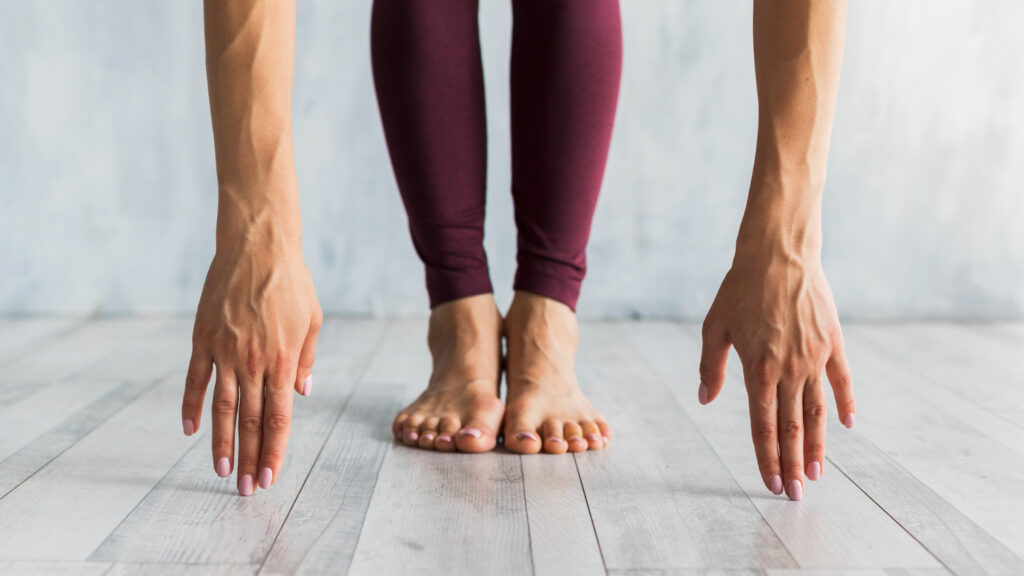
Fast Facts
Barefoot workouts can enhance balance and proprioception
They may help strengthen foot muscles and increase sensory feedback
Risks include cuts, scrapes, and exposure to infections in public spaces
Mixed research results on the impact of barefoot workouts on athletic performance
Recommended for low-impact activities like yoga and pilates
Not suitable for individuals with pre-existing foot conditions.
Traditionally, high-quality sneakers have been deemed essential for effective workouts. However, a growing number of trainers and fitness enthusiasts are advocating for barefoot exercise.
Sneakers offer support, comfort, and stability, helping athletes excel and avoid injuries. Yet, proponents of barefoot workouts highlight benefits such as improved mobility and enhanced proprioception, the body’s ability to sense its position in space.
The Benefits of Barefoot Workouts
Working out barefoot can improve balance and coordination by allowing the feet to connect directly with the ground. This connection helps strengthen the feet and enhances proprioceptive awareness, which can lead to better body control and reduced injury risk.
Gregory Alvarez, DPM, a podiatrist at the Ankle and Foot Centers of America, explains that barefoot exercise increases sensory feedback from the sole of the foot, promoting better body awareness, coordination, and neuromuscular control. The result is improved balance, agility, strength, and stability.
Anna Balabanova Shannahan, MD, from the Osher Center for Integrative Medicine at Northwestern Medicine, adds that going barefoot requires more ankle stability and can increase plantar support. Additionally, without the restrictions of cushioned shoes, individuals can move more naturally.
The Risks of Barefoot Workouts
Despite the advantages, there are risks associated with barefoot exercise. The soles of our feet are not as tough as athletic shoes, making them susceptible to cuts and scrapes. In public spaces like gyms, there’s also a higher risk of fungal infections such as athlete’s foot.
Research on the benefits of barefoot workouts is mixed. One small study found that eight weeks of barefoot running did not significantly impact strength or proprioception. Another study on deadlifting showed no performance boost from going barefoot. However, a report on young adult women playing netball indicated improved ankle stability and agility when playing barefoot.
Is Working Out Barefoot Right for You?

Whether to exercise barefoot depends on individual health and the type of activity. People with pre-existing foot conditions like plantar fasciitis, heel spurs, or bunions should continue wearing shoes. Those with low or high arches might also benefit from the additional support that sneakers provide.
Barefoot exercise is generally safe for indoor mat activities like yoga and pilates, as long as there are no existing foot or ankle issues. However, it is not recommended for cycling due to the risk of foot injuries from the pedals. Outdoor activities, especially running, should be done with shoes to avoid injuries from sharp objects and uneven surfaces.
When strength training at home, trying barefoot exercises can enhance proprioception. However, in public gyms where bacteria can spread, wearing socks or shoes is advisable. Dr. Shannahan recommends shoes for heavy weight lifting to provide necessary foot and ankle support.
How to Transition to Barefoot Workouts
For those interested in barefoot workouts, it’s crucial to transition gradually. Start with short, low-intensity sessions to let your feet adjust. Consider beginning with barefoot warm-ups and cool-downs before attempting full workouts.
Strengthening the legs, hips, and buttocks can help compensate for the lack of cushioning and support provided by shoes. Minimalist footwear, which offers less support than traditional sneakers, can also be a good intermediate step.
Consulting a podiatrist or specialist can help identify any potential issues that might make barefoot workouts painful. Most importantly, listen to your body. If barefoot exercise feels good, continue. If it becomes painful, stop and take care of your feet.
Takeaway
Ultimately, the decision to work out barefoot should be based on individual needs and preferences. While some may find it beneficial, others might not. It’s essential to find what works best for you and ensure you exercise safely and comfortably
FAQS
What are the benefits of working out barefoot?
Improved balance, stronger foot muscles, increased proprioception, and more natural movement.
Are there risks to working out barefoot?
Yes, risks include cuts, scrapes, and fungal infections, especially in public gyms.
Who should avoid barefoot workouts?
People with plantar fasciitis, heel spurs, bunions, or low/high arches should avoid barefoot workouts.











